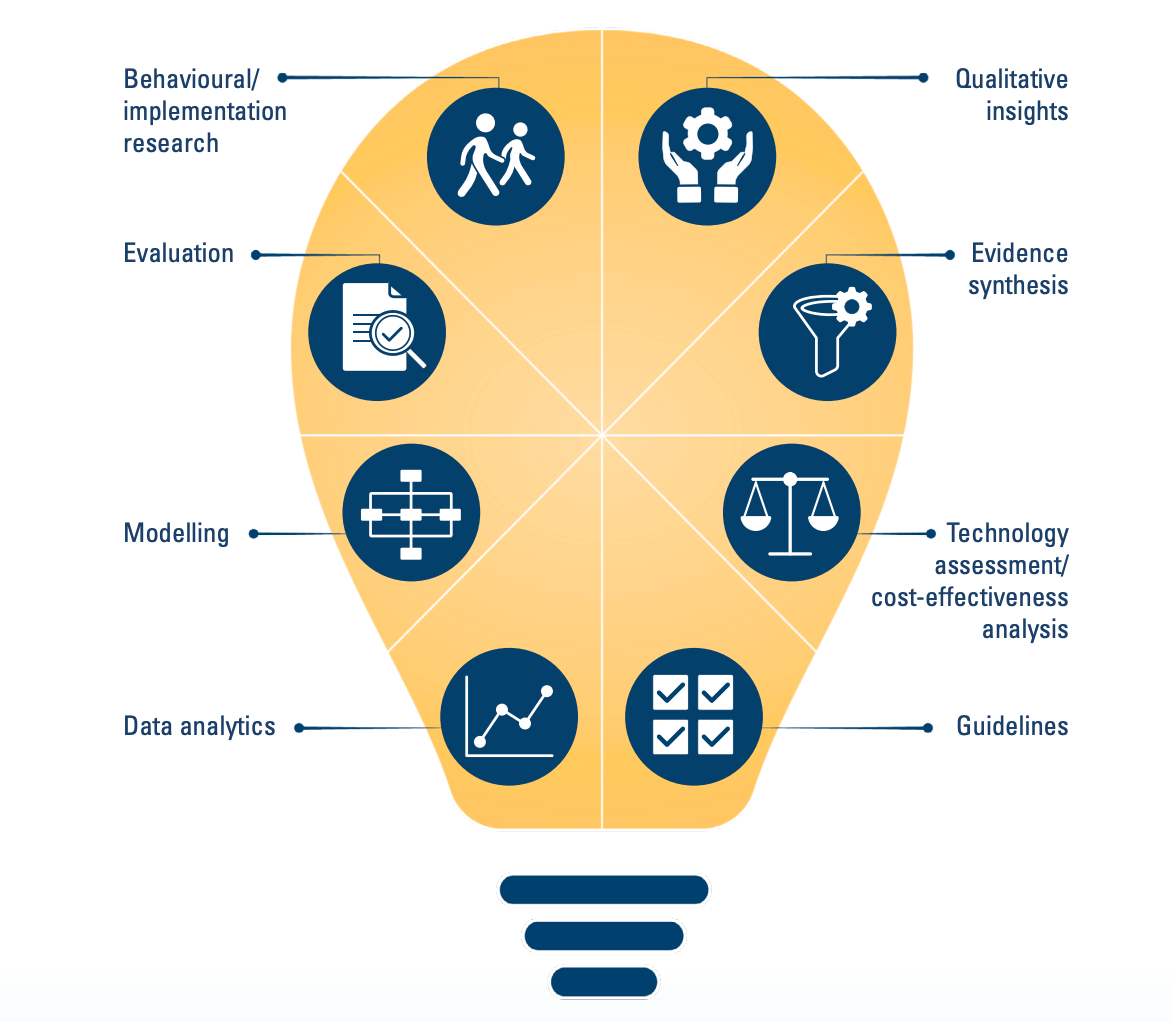FAQs
What is evidence?
We use the term ‘evidence’ as a short form for ‘research evidence.’ In a broad sense, evidence refers to any systematic observation in order to establish facts and reach conclusions.
Evidence is typically encountered in decision-making in eight different forms. For more details about each form, click here.

Evidence can help in any of four steps in a decision-making process:
- understanding a problem and its causes
- selecting an option for addressing the problem
- identifying implementation considerations
- monitoring the implementation of an option and evaluating its impacts.
What is an evidence synthesis?
Making decisions based on the findings of a single study can be ill-advised. A single study may have been poorly done, may not tell us enough, or may be biased. We also have more confidence when multiple good studies have similar findings. The best answers are found by synthesizing (or combining) the findings of all the studies on the same topic.
This short video explains what is an “evidence synthesis” and how it is useful to everyone making decisions.
You may have heard the term “systematic review” because it is the most common form of evidence synthesis. During the pandemic, researchers had to produce evidence more quickly and constantly update it as new studies were published. This resulted in many “rapid reviews” to bring together the evidence in a shorter time frame.
The pandemic has also created a huge demand for what’s known as “living evidence syntheses”. Think of this as a report that evolves as things change and new evidence emerges over time. Because of the rapidly evolving nature of the pandemic, new evidence is being generated every day. Living evidence syntheses are thus crucial to keep up with the pandemic.
What is a plain-language summary?
Plain-language summaries are often how the findings of evidence syntheses are presented to the public. Plain language is about explaining things using everyday words. Plain-language summaries describe what studies have found, but they are written in language that people without a background in science can understand. It is the ideal way to communicate evidence, without all the jargon and technical terms.
Plain-language summaries can help you to base your decisions on the best available evidence. By having a better understanding of current pandemic research, you can also be better prepared for conversations with your care providers, friends and families.
Why engage the public in evidence syntheses?
Policies and guidelines impact everyone’s lives. So, it makes sense that everyone’s experiences are taken into account when decision-makers create these policies and guidelines. We all live together and the choices we make to manage our everyday lives have an impact on us, our loved ones, our neighbours, and everyone else around us.
